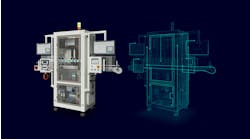All over the world, we are discovering the benefits of digital automation. Whether this is streamlining home appliances via one central application or revolutionizing industrial manufacturing systems. The scope of automation is rapidly growing, and we need to get onboard or risk becoming obsolete.
We need to deploy more than just new technologies to harness these benefits. We must come together and reform the way we collaborate, both in person and through our equipment.
Also read: Schneider Electric supports open automation with Universal Automation
Innovation must be harnessed to create competitive advantages and bolster our position within the quickly evolving industrial market. To achieve this, we must begin to automate all manufacturing equipment universally. This will create greater efficiencies, removing the obstacles of vendor-locked manufacturing processes. Operators, engineers and technicians have the power to drive better outcomes and create more resilient and efficient business futures.
Foundation for innovation
To achieve the benefits that Industry 4.0 and the Industrial Internet of Things promise, next-generation automation systems must address data-enabled and software-centric innovation through the convergence of information technology (IT) and operations technology (OT); plug-and-produce automation; and reference implementation.
Data-enabled and software-centric innovation through IT/OT convergence: Industrial players must invest in software-centric and data-enabled innovation that enables actions based on the gathering and analysis of information that the traditional siloed industrial hardware alone is not able to offer. Only then, the promise of the Fourth Industrial Revolution will be fully realized.
UniversalAutomation.Org (UAO), a nonprofit association managing the reference implementation of an industrial automation and shared source runtime execution engine, supports an event-driven software-component design methodology, built on IEC 61499 technology, that integrates automation systems with IT data-analysis tools.
There is evidence that shows this technology saves costs and enables shorter time-to-market. Using software-driven tools such as digital twins, we can simulate outcomes without having to invest in hardware to validate a proof of concept, saving time and money.
Plug-and-produce automation: Though open automation exists, it does not go far enough. The existing locked-in industrial-automation models no longer address the challenges of a more complex, volatile marketplace. Industry players need open, flexible and efficient interoperable systems at an application level to integrate and fluidly and easily adapt to change.
In such an environment, the concept of universal automation is gaining traction. Universal automation is an open and collaborative approach, introducing users to a world of plug-and-produce applications. It enables à-la-carte automation because software is decoupled from the underlying hardware. Cost and performance can then be optimized by assembling proven-in-use software components without regard to brand.
As a result, an app-store model for industry, consisting of asset-centric automation systems, can be leveraged to drive new business opportunities for users through software and increase efficiency. Don’t reinvent the wheel; use best-of-breed proven-in-use software.
Reference implementation: In the IT domain, the use of reference implementations has enabled the quick adoption of new technology. The future of industrial automation should follow this trend, as well. As a shared source, this reference implementation can radically increase the adoption rate of new technology and decrease compliance testing between systems from different suppliers.
The reference implementation of an IEC 61499-based runtime execution engine enables other market players to quickly implement the technology, while also ensuring interoperability at application level and portability of automation solutions.
An open vendor network
Implementing these changes and reaping the benefits of the next generation of industrial automation requires every company to develop a tightknit ecosystem of partners. Industry 4.0 automation cannot be achieved by a single firm or vendor. Industry players must unite to share expertise, technology and innovation.
Members of UniversalAutomation.Org come from the user community, the vendor community, software developers, academics, startups and industry leaders. What they have in common is a shared vision of universal automation systems where the application software is portable and seamlessly interoperates across vendor platforms.
John Conway is president at UniversalAutomation.org (UAO) and vice president of business transformation, industry, at Schneider Electric. Contact him at [email protected].




